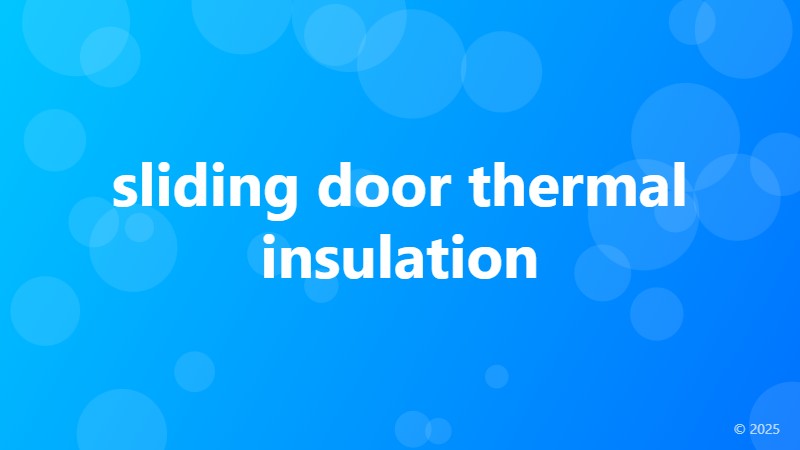sliding door thermal insulation

Energy Efficiency with Sliding Door Thermal Insulation
As energy costs continue to rise, homeowners and builders are constantly on the lookout for innovative ways to reduce energy consumption and minimize their carbon footprint. One effective solution is the incorporation of sliding door thermal insulation into building designs. This feature not only enhances energy efficiency but also provides a sleek and modern aesthetic to any space.
In this article, we'll delve into the benefits of sliding door thermal insulation, its importance in modern building design, and how it can significantly reduce energy costs.
What is Sliding Door Thermal Insulation?
Sliding door thermal insulation refers to the integration of thermal insulation materials into sliding door systems. This technology involves the use of specialized materials, such as thermal breaks, low-E glass, and insulating gases, to minimize heat transfer between the interior and exterior of a building. As a result, the energy required to heat or cool a space is significantly reduced, leading to substantial cost savings and a more sustainable living environment.
The Importance of Thermal Insulation in Modern Building Design
Thermal insulation plays a critical role in modern building design, as it helps to maintain a consistent indoor temperature, reduce energy consumption, and minimize the environmental impact of buildings. Sliding door thermal insulation is particularly important in regions with extreme temperatures, as it prevents heat gain during the summer and heat loss during the winter.
In addition to energy efficiency, thermal insulation also provides several other benefits, including:
- Improved indoor air quality
- Enhanced acoustic insulation
- Reduced condensation and moisture buildup
- Increased durability and lifespan of building materials
How Sliding Door Thermal Insulation Works
The science behind sliding door thermal insulation is relatively simple. When a sliding door is closed, the thermal insulation materials work to reduce heat transfer between the interior and exterior of the building. This is achieved through the use of:
- Thermal breaks: These are materials with low thermal conductivity, such as fiberglass or polyurethane, which are inserted between the door frame and the surrounding wall.
- Low-E glass: This type of glass has a low emissivity coating, which reduces heat transfer and minimizes energy loss.
- Insulating gases: Gases like argon or krypton are used to fill the gap between the door panels, further reducing heat transfer.
By combining these technologies, sliding door thermal insulation can achieve U-values as low as 0.5 W/m²K, making it an ideal solution for energy-efficient buildings.
Conclusion
In conclusion, sliding door thermal insulation is a vital component of modern building design, offering a range of benefits that enhance energy efficiency, indoor comfort, and environmental sustainability. By incorporating this technology into your building projects, you can significantly reduce energy costs, minimize your carbon footprint, and create a more comfortable and healthy living environment.